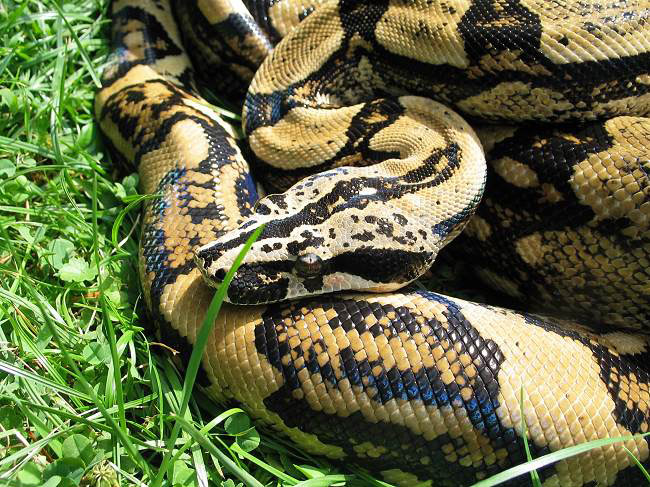

If I know my geography of Florida, that seems farther north than what Frank Mazzotti was talking about. And we have a call here from Holt, Florida. HEADLEE: Well, let's take a call here because we're asking for, well, in this case not big fish but big snake stories. But what we do know is that the origin of this and other invasive species in Florida has come from the pet trade. It could perhaps have been aided by animals that were released by Hurricane Andrew. It would not have taken a lot of animals to cause this problem. If a female has mated and has sperm, she can store her sperm and lay eggs for a number of years. In this case, it could've been maybe as few as one or two animals let go in the early 1980s. Now, that said, it's not like there's a hoard of people running out into the Everglades letting animals go. MAZZOTTI: What is fair to say is that the Burmese pythons and many of the invasive species today have their origin in the pet tree. HEADLEE: Where are they coming from? Where did they start? Was this just somebody who bought a Burmese python as a pet and let it go? And so we have very much serious concerns about the potential of that Burmese pythons, and indeed other invasive species, might be causing in the Florida ecosystem. Well, this isn't top predator, it's like an invader who is coming to a system that completely lacks defenses against it.

And they're a top predator and, you know, so much has spoken about the importance of top predators in nature shows and their role. MAZZOTTI: But the problem is that they're an invasive species, and the danger that they cause is really to the ecosystem. HEADLEE: But the problem is that they're an invasive species, right? MAZZOTTI: In the wild, simply because of their - of the very low encounter rates with humans, they pose very little danger. HEADLEE: So how dangerous an animal are Burmese pythons? MAZZOTTI: We spend a lot of time looking for pythons and we don't see them most of the time when we're out. MAZZOTTI: That, well, that is certainly something that could happen. HEADLEE: Meaning, that if I were driving through the Everglades and got out of my car and started walking, I might come up and meet a Burmese python. As far west as to Naples and a few have been headed - heading south towards the Keys. They go as far north for example as the boundary between Broward and Palm Beach Counties. MAZZOTTI: The pythons are definitely concentrated in certain locations in the Everglades, but they are fairly widespread. For those of us who have never been to the Everglades, perhaps, or have never seen a python, certainly up close, paint a picture of this for us. The hunt has actually taking place miles from where you are. University of Florida is providing scientific support to the Python Challenge and Frank joins us now from Fort Lauderdale where the contest launched over the weekend. Joining us now, Frank Mazzotti, a professor of Wildlife Ecology at the University of Florida. Our email address is or you can join the conversation at our website, it's npr.org and then click on TALK OF THE NATION.

Have you had a memorable encounter with a big snake in the wild? Give us a call at 80.

So we want to hit your big fish stories today - not about fish, but about snakes. Approximately 800 competitors have registered for Florida's first ever Python Challenge. To confront the issue, the Florida Fish and Wildlife Conservation Commission has issued a challenge to licensed hunters and the general public harvest as many pythons as possible between now and February 10th, and claim thousands of dollars in cash prices. And with has no natural predators in region, pythons present a tricky problem for the native ecosystem. Experts estimate there could be as many as 150,000 invasive Burmese pythons living in the Everglades. But in Florida, there's a python problem.


 0 kommentar(er)
0 kommentar(er)
